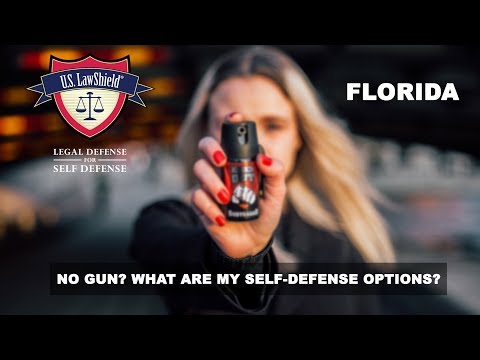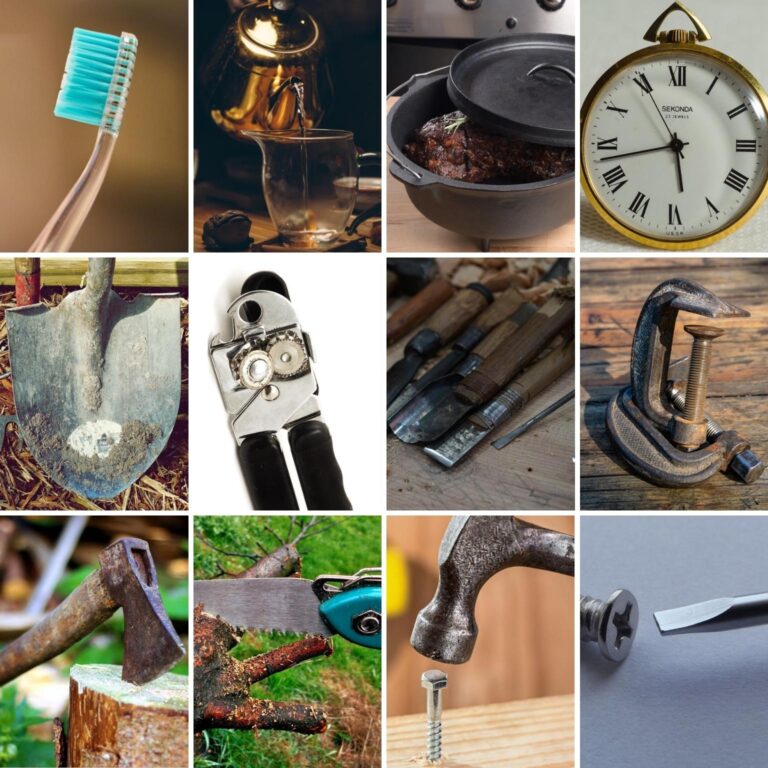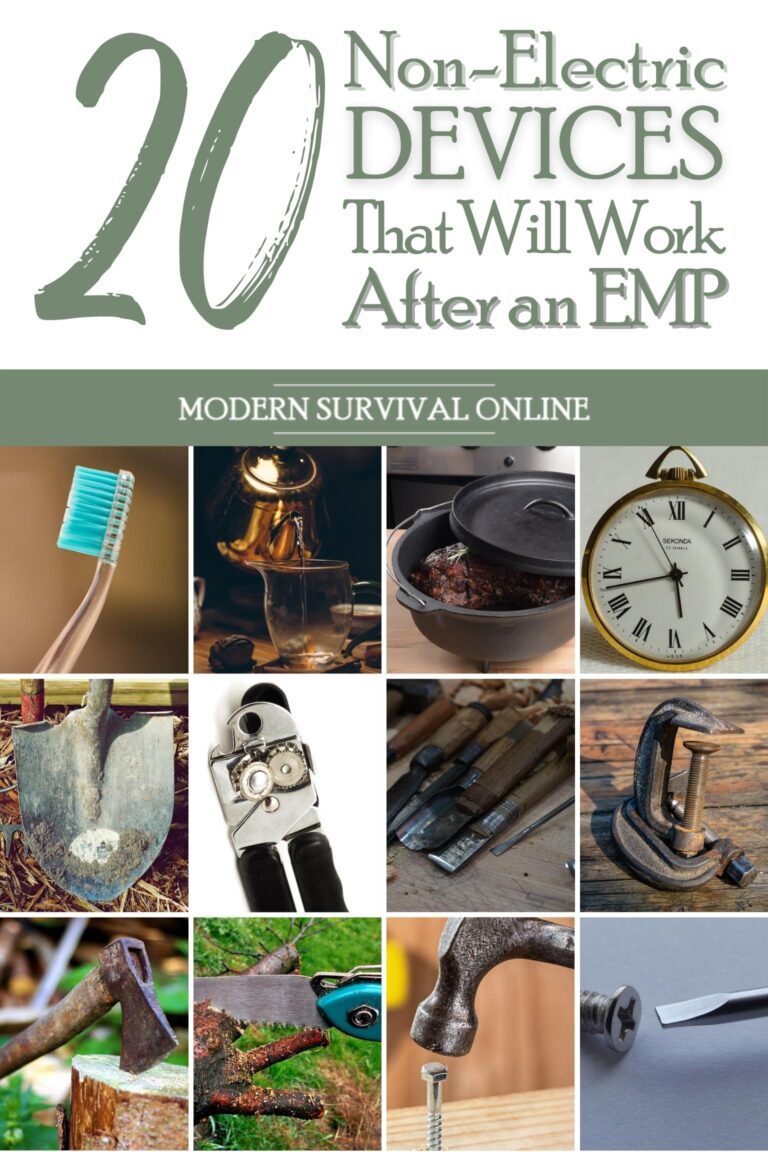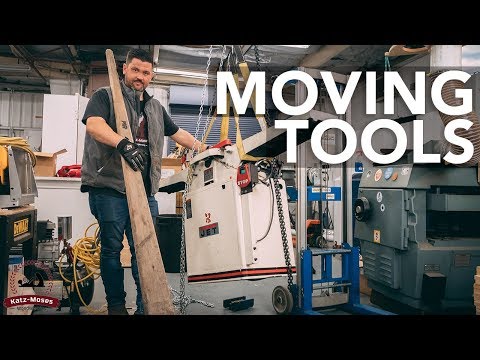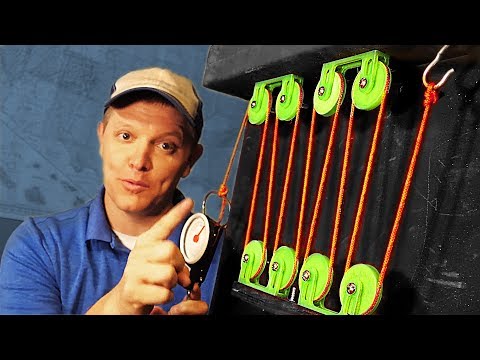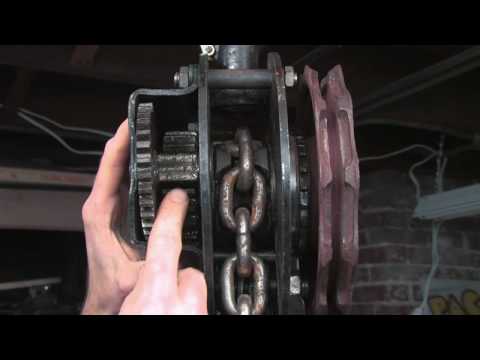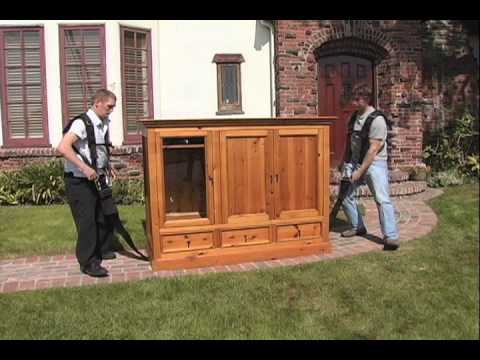Many a prepper has grand ambitions of running away into the wilderness to live in comparatively peaceful anarchy whenever trouble strikes.

You have to admit, the notion is definitely romantic. Heading into the deep country with only your knife and your wits, and carving out your own home and existence from the bounty of the land.
While it is definitely viable, and there is an entire category of skills devoted to the purpose, known as bushcraft skills, tackling such an endeavor with nothing but a knife will be a severe test for even the most seasoned, salty, hardened outdoorsman.
It is a viable strategy, if a difficult one, but increasing your chances of success to anything but “vanishingly slim” takes many more tools than a knife.
I’m not trying to talk you out of it, but I am trying to get you properly equipped for the occasion.
To further that effort, I’m bringing you the mega list of bushcraft tools and a few weapons that you should consider taking with you into the wilderness, whatever reason you are heading out there.
Bushcrafting Isn’t About Mere Survival!
Bushcrafting skills will indeed keep you alive and the most austere, wilderness environments, but it’s not just about mere survival or rather survival as the lowest common denominator.
Survival skills might keep you alive at the bleeding edge of human existence, maybe just extending the time you have until expiry.
Bushcrafting, on the other hand, is really about living in the woods or wilderness for an extended period of time.
These are the skills and the appropriate tools necessary to not just sustain life but create a life in the environment.
It might be life that looks very different from the one you and I likely enjoy today, but it will be recognizably life.
These are the skills that set up itinerant towns and communities in service of logging, trapping, and hunting operations. These are the skills you’ll need to create your own sort of “Walden Pond”, as it were.
When it comes to long-term sustainment, the kind you might be embarking on in the aftermath of a societal collapse or some other major SHTF incident these skills will likely be the ones that can make or break you.
What Items Are on This List?
The tools and weapons you’ll find on this list are those intended to help you not only survive, initially, in a hostile environment but to improve that environment to serve you better and to suit you, either by way of crafting better shelter and additional tools or even shaping weapons for defense or for hunting.
Naturally, some of these items are not what you would expect to see in a typical bug-out bag.
There is plenty of overlap, but a bug-out bag functions as more of a survival air tank, extending the amount of time that you can spend away from civilization before needing to return for resupply. Many of them are significantly more specialized than typical survival tools.
Also, speaking of weapons in particular you would have probably noticed immediately when you read that far that firearms are conspicuously absent.
This is because firearms, aside from being complex machines, rely on consumable ammunition that cannot be crafted in the field without the ammunition’s constituent parts and the tools necessary to assemble it.
Even something like a primitive muzzle-loading firearm requires gunpowder or equivalent propellant to function, something you can’t exactly whip up yourself.
Instead, weapons featured on this list can either be improvised using other tools and materials you have on hand, crafted from scratch using the material in the environment or, if they are a projectile weapons, are capable of using ammunition sourced or crafted from materials in the environment.
With that little disclaimer out of the way, let us get right onto the list.
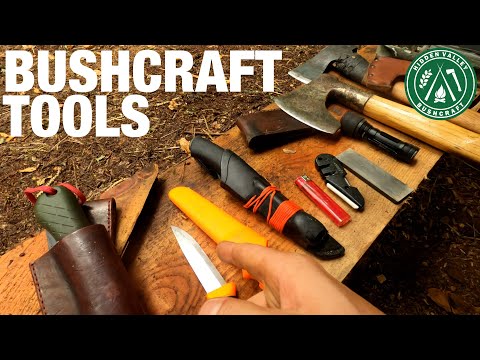
Tools
Knife
You knew the knife was going to be first on our list. One of man’s oldest and best tools, ask any prepper or bushcrafter what the number one tool that they are unwilling to part with is and they will tell you it is their trusty knife almost every time.
This is because the knife is so fundamental to success in virtually every environment.
A good knife can be used to cut, chop, scrape, notch, whittle and baton. It is a superb all-purpose tool and also a vicious close-quarters weapon, one that can be fashioned into a spear in a pinch.
Naturally, you don’t want to go without your knife under any conditions and any knife you choose for bushcraft duty should be hardcore and capable of withstanding constant use and plenty of abuse.
A detailed discussion on knives is worthy of an entire article or five all by itself, but my recommendation is you stick with any medium to large size fixed blade knife designed for camp and field or multipurpose usage.
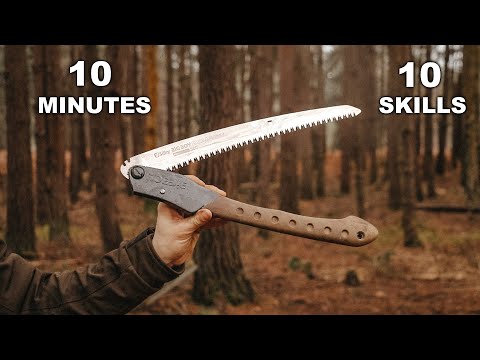
Saw
Saws are a chronically underutilized wilderness tool, and one that is worthy of inclusion in any kit but especially a bushcraft kit.
A good, sharp saw will let you sail through large and small diameter branches typically with greater speed and almost always with much less effort than using an axe. For cutting off limbs or precisely sizing raw lumber, a saw is tops.
Saws also come in a surprising variety of types and form factors, from the garden variety handyman or toolbox saw that can handle a wide variety of duties to compact but strong folding backpacker or survival saws.
You can even get loose, flexible emergency saws that are basically a toothy section of wire and function by pulling them back and forth across the wood being cut. Usable, but better in a compact survival kit.
Whichever one you choose for your bushcraft duty make sure it is strong and sturdy to hold up to the rigors of constant use.
It is good to save room in your pack or elsewhere in your luggage, but not at the cost of the tool being unable to do what you needed to do.

Axe
The axe is another primordial tool that no outdoorsman should go without. For chopping down the largest trees, splitting wood to feed the campfire, notching logs and a dozen other tasks, a good ax combined with good technique can get it done efficiently and quickly.
In the hands of a skilled lumberjack, an axe can take care of most of the coarse processing of a tree after you have felled it.
That is the versatility that you will rarely find in any other tool. Axes do have some trade-offs, of course, namely that they are bulky and fairly heavy.
They also don’t do well for fine, detailed cutting tasks but then again they really aren’t supposed to.
If you want to save weight and space in your kit you might consider a hatchet or a hand axe, but you give up much in the way of power and efficiency as you start to shorten the handle.
Hatchets are also more dangerous to the user, compared to an axe, because the shorter handle means that the cleaving, the sharp edge might bury itself in your knee or shin instead of into the dirt or your foot, so be careful if you choose one of those!
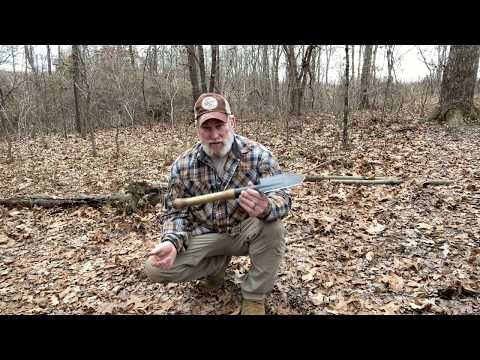
Shovel
The shovel is another tool that is underutilized and often neglected or forgotten.
For clearing out a campsite, creating trenches to direct rainwater or just digging a cat hole or slit trench to serve as a latrine, the shovel makes what is normally a clumsy and inefficient job quick and easy by comparison.
Naturally, you probably don’t want to be carrying around something as long and cumbersome as a full size Spade with you on your forays unless you have an accompanying baggage train, but luckily you won’t have to.
A variety of short-handled and folding field or camping shovels, or their equivalents in the military entrenching tool, are entirely adequate for most jobs even if you do have to stoop down a little more.
Shovels are also mandatory for survival in any place that might have mud or deep snow as another challenge of the terrain.
Sure, you can improvise a variety of things for scraping and shoveling duty but nothing works as well as the genuine article.
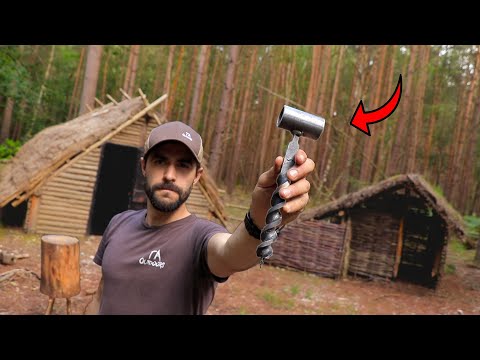
Hand Auger
You won’t exactly be working out in your usual wood shop when you are out in the deep country, but that doesn’t mean you won’t have calls to drill nice, clean holes.
Whether you are trying to sink posts in the ground or create a simple but strong joint with a peg-style connection, a clean, symmetrical hole is what you need and an auger can do that for you.
Now, we aren’t hauling any electrical tools with us so that means we need to go old school, per usual.
A hand auger that is suitable for field use looks like exactly what you’re imagining, a giant drill bit with a fine, sharp point to create a pilot hole, only the top of the bit has an oversized eyelet suitable for inserting a long, sturdy branch or even the handle from another tool like your shovel or ax in order to generate the necessary leverage.
You won’t use this for everything, but when the time comes to craft some seriously sturdy constructions or structures, you’ll be glad you’ve got it.
Whittling/Shaping Tools
Whittling and shaping tools are another excellent Bushcraft kit inclusion, especially if you are going to be starting from scratch and staying out for a very long time.
Tools on the smaller scale can be used for creating everything from bowls to utensils while larger scale wood shaping tools like draw knives can help you optimize lumber for building structures or boats.
While it is true that you can use almost any bladed implement to whittle and shape wood further after you roughly process it, none are as ideal as the right tools for the job.
Accordingly, if wood factors heavily into your plans you should be planning on doing the job right.

Sharpening Stone
A reliance on bladed implements means you’ll need something to sharpen them with.
There are lots of good sharpening stones and knife sharpening devices on the market these days, but for maximizing return on investment and minimizing weight and bulk, I greatly prefer a two-sided, puck-style sharpener. Lansky makes a good one called, surprise, the puck.
although some guys prefer to haul a dedicated sharpening kit into the field with them that might be a letdown when you consider that it is difficult to find flat, stable, and even surfaces and abundance out in the wild.
Sure, you might be able to use a tree stump, boulder, or section of a large log as a makeshift table, but you’ll still be out of luck if you need to clamp your sharpener to it.
No, in this case it is better to learn how to do a good job of maintaining your edged tools using traditional methods. That way you’ll also have a backup plan in case you lose or break your sharpening stone.
You can use river stones and other minerals besides to serve as entirely functional sharpeners so long as you know what you’re looking for.
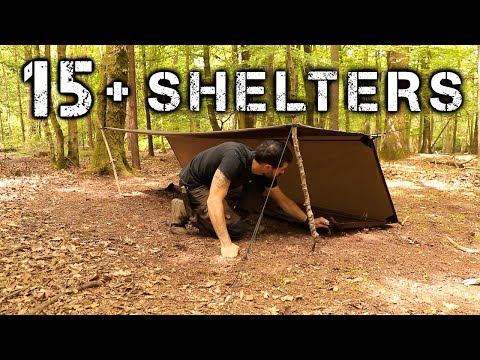
Tarp
Shelter considerations are always near or at the very top of your list of survival priorities, and whether you are bugging out, camping, or just living long-term in the bush that stays the same.
You can set yourself up for success by having versatile, multipurpose materials that can work as a shelter all on their own or be integrated into a shelter you make yourself or even better performance.
Enter the humble tarp. A tarp can be used as a tent, as a bivy, a shade, a windscreen, a reflector for a campfire, a ground cover and so much more. It will also do wonders to keep rain and snow off of you.
A good tarp will be completely waterproof, double-sided, and properly stitched for maximum durability with equally heavy-duty grommets so you can fold it, lash it and attach it however you need to under the circumstances.
Keep in mind you can also use your tarp for such tasks as water catching and storage after you are done using it as a primary shelter device.
These things weigh next to nothing and pack down very small so you have no reason not to bring one with you in any case.
Cordage
Cordage is another crucial resource in a wilderness setting. You’ll use cordage for all kinds of chores as well as problem-solving, and also use it as a component and things you build or construct.
Cordage is often used for erecting shelter, maybe just your tent made from the tarp mentioned above but also to hold large timbers or sticks together.
You can use your cordage for hanging food bags to keep it away from wildlife, setting traps, lashing down gear, and much, much more.
Everyone has their preference when it comes to cordage, and most bushcrafters today will choose paracord since it is both incredibly strong and highly affordable.
This stuff is supremely tough and versatile, but too thick for more delicate tasks.
If you don’t need the awesome strength of paracord or want to carry a different kind of cordage to make up for its shortcomings consider bringing an accessory cord with you which is much finer and usually has a breaking strength of between 80 lbs and 100 lbs.

Sleeping Bag
As mentioned above, exposure is a constant risk and statistically a major killer of people who get into trouble in any wilderness setting.
You might be surprised to learn that you don’t have to be in a frigid or polar environment to be at risk of exposure.
In the right places during the cooler seasons, or even just a particularly cool night, it is entirely possible to be stricken with hypothermia due to falling temperatures in conjunction with wet skin or clothing and a good, stiff breeze.
This is made even worse by people’s propensity to sit down and rest or just wait when they are profoundly miserable and exhausted.
The ground, the very earth itself, is basically a big heat sink and as conditions get colder it will serve to pull more and more heat out of your body, further compounding the problem.
You need a sleeping bag even if you are in an area with pleasant, mild weather, because you could be just one bad turn away from the risk of exposure.
A nice, dry, warm sleeping bag that you can snuggle down into, even if you have to take your wet clothes off, is a boon.

Emergency Blanket
An emergency blanket is another critical piece of gear for any foray into the wilderness.
These ultra-light, crinkly metallic blankets might not look like much, but they can reflect upwards of 90% of the heat emitted by your body back towards you, helping to keep you dramatically warmer than you would be otherwise in any conditions.
These are the perfect supplement to the rest of your shelter gear, and are lightweight enough too, quite literally, fit comfortably in a pocket so you never have an excuse for going without one.
These also work gangbusters as a reflector for a campfire if you can hang them up behind you and place yourself between it and the fire.
A great piece of survival gear that no bushcrafter should go without.
Ground Pad
Rounding out our shelter gear is the humble ground pad. Typically made of dense, closed cell foam, a ground pad serves to protect your soft and comparatively delicate body from the hard, uneven ground and all of the jabby, pokey, pressure point torturing things that it contains.
It might sound like a luxury, but consider that getting meaningful rest is just as important as all of your other physical requirements and you’ll start to see the value in this simple piece of kit.
If you don’t want to commit to a large roll of foam tagging along with you as part of your compliment, you could consider an inflatable version.
Popular with the backpackers, modern examples of this type are very good, better than you might be expecting, but still vulnerable to puncturing and slow leaks, and these leaks are something you might not be able to easily repair in the field.
Whistle
A simple whistle is useful both as an emergency signaling device and as a common communication tool for anyone else that might be traveling or working with you.
The shrill blast of a whistle can be heard over several miles in good conditions, and for simple signaling like go, stop, begin, come here, danger, or whatever it is perfect over much shorter distances where yelling is still impractical and electronic forms of communication are out of the question.
There are many good survival whistles on the market, but whichever one you choose, make sure you keep it on you, preferably on a lanyard so you’ll never be separated from it.

Compass
No matter where you are going, a compass is always a crucial piece of gear. It is entirely too easy to get turned around out in the wilderness, being in the forest, on the plains, out on the frozen tundra or in the middle of the scorching desert.
The most elementary part of land navigation is knowing which way you are facing, and accordingly which way you are moving.
Sure, there are ways to establish this with surprising accuracy but nothing beats a compass in this regard. Make sure you include one as a contingency item in your bushcraft kit.
A full-size field compass or lensatic compass is probably best, but you can get away with something more rudimentary in the form of a compact, button-style compass.
You’ll give up fine accuracy, especially in conjunction with a map, but its handy nature means you are more likely to have it with you.

Water Filter
One of those precious survival commodities is always going to be water, and no matter any other conditions or circumstances you happen to be dealing with, you can only go a few days at most without water before you perish.
Even if you are fortunate enough to be living in sustaining in an environment with plentiful natural water supplies, that water could still be a threat to your overall health.
All sorts of nasty microorganisms and dissolved solids are probably lurking in that very same water, everything from bacteria and viruses to protozoa and parasites.
You don’t want any of them going into your body if you have any choice in the matter.
A handy, compact portable water filter will take care of this problem for you in seconds and turn out water that is probably cleaner than the stuff coming out of your tap.
Water Bottle or Canteen
Finding the water is one thing, purifying it is another, and keeping it with you in a handy way is yet another thing entirely.
The simple and obvious solution is to bring along a sturdy water bottle or canteen according to your preferences. Not much more to say about the matter, except that everyone has their preferences.
Some folks like the relatively low profile form factor of a canteen while others prefer the sturdy and relatively bomb-proof construction of modern, polycarbonate plastic water bottles.
If I were going to make one suggestion, I would recommend you get a metal water bottle or canteen with no internal liner and a wide mouth.
This will make it both easy to fill, easy to rinse, and suitable for heating up with water inside it.
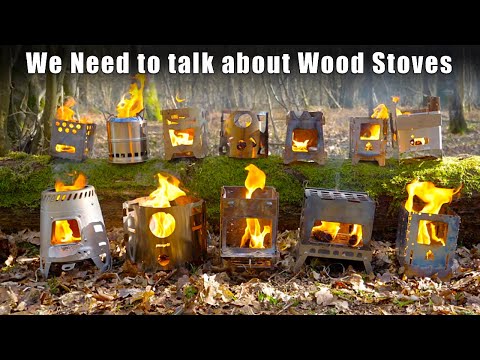
Camping Stove
Sometimes you won’t always have the time or the call to build a proper fire suitable for cooking.
Whatever the case, the cooking must continue or just the boiling of water for sterilization or other purposes and in either set of circumstances a camping stove is perfect.
Compared to a bug-out bag, going into a proper bushcraft scenario it means you are planning on sustaining out in the wild for some time and this can make carrying a sometimes bulky camping stove a worthwhile trade-off.
Camping stoves come in all kinds of form factors and rely on various kinds of fuels. Ultra-compact folding camping stoves may use wood that you would otherwise feed into a campfire.
Classic 2-burner briefcase style camping stoves as popularized by Coleman among others utilize propane just like your full-size grill at home. Still, others use compact and efficient canisters of alcohol or other liquid fuels.
All of them have advantages and disadvantages, and you can make a case for any of them.
Mug
A mug is a simple inclusion to your bushcraft kit, but just the trick for preparing coffee, tea, hot cocoa, or eating a portion of hot stew.
I don’t have any fancy advice for you, but I recommend a sturdy, metal mug for maximum durability and the ability to heat it directly in or by the fire.
Pot
Like the mug above, a pot is a foundational part of your backcountry cook set. Useful for preparing larger meals, stewing, or boiling a large quantity of water in one go.
Like the mug, make sure this is metal and tough to withstand the rigors of field life and repeated use.
Utensils
Eating with your hands is unsanitary and a major drag. There is still a place for utensils in your bushcraft kit.
Compact, feather-light plastic utensils are all the rage but, once again, I still highly recommend stout metal utensils for eating.
Though you might pay for it in a few extra grams of weight, the durability and ease of sanitizing them will be worth it in the long run, I promise.

Firestarter
You won’t always be making use of your camp stove or have a campfire, or cooking fire, already roaring and tended to when you need it. So much of the time you will have to clear a spot, gather fuel, build and light a fire yourself and that means you need a fire starter for the job.
There are two schools of thought here. The first is using a more primitive fire starter, even if it is a modernized version. A flint and steel or ferro rod is a good choice and generally reliable and all weather conditions.
With a little practice and a flick of your wrist you can have a shower of blazing sparks smoldering and a couple of seconds.
The second school of thought is relying on modern accouterments like lighters and matches. I greatly prefer having a lighter on hand as well as some backup survival matches.
In anything but the most outrageously bad conditions, a quick click of your thumb will get your fire going, saving you precious time and energy after a long day of hard work.
Tinder
Everyone knows you need fuel to feed a fire, but only seasoned outdoorsmen know you need the right kind of fuel to initiate your kindling to give life and structure to your fire.
This initial fuel is known as tinder, and ideally it will be easy to light, hot burning, and adaptable to your purposes.
How unfortunate it is then that good tinder is not always easy to find in the wild, even when primary fuel might be plentiful.
The solution that bushcrafters have relied on for ages now is to bring their own tinder with them.
The good news is that good tinder can be had in many forms, everything from something unexpected like dryer lint to the truly strange like oily corn chips.
Some others use strips of rubber and still, others use petroleum jelly-coated cotton balls for the purpose. In any case, all of these items are tiny and take up hardly any weight in your kit.
A little creativity goes a long way here, so research the topic and include some in your bushcraft stash for sure.
Bow Drill
The bow drill is a primitive fire-starting tool that still sees use today thanks to its adaptability and efficacy for being made out of found materials.
In use, a bow drill looks very much like its namesake, only the string is wound around a center spindle, or drill, that is then used with the bow to generate enormous friction on a base piece of wood with the objective being producing burning hot coal capable of easily starting a fire.
This is one of the traditional fire-starting tools that bushcrafters learn to make once they are getting serious about their outdoor sustainment skills, and the good news is once you have created the bow drill it is easily broken down and taken with you, ready to be used again.
When all other options fail or your fire-starting kit is lost or otherwise consumed, a bow drill might save the day.
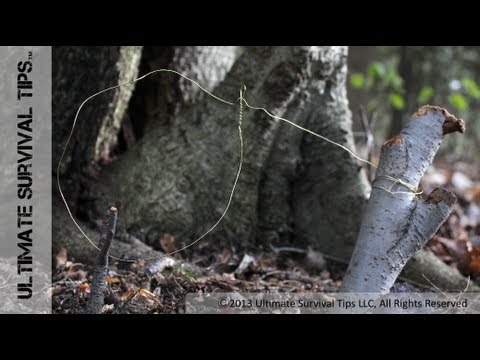
Snare Wire
Trapping is a chronically underutilized method of providing sustenance and other raw materials in a long-term sustainment situation.
Trapping is an ancient skill set, one that is definitely not in vogue these days. However, when the chips are down trapping might well be the force multiplier that makes the difference for you.
Compared to hunting, a trap works all by itself. It doesn’t get tired, it doesn’t need your constant supervision and it generally won’t make a mistake from fatigue.
Traps are generally victim actuated, and one of the best and most adaptable families of traps is snares.
Snares can be made for all kinds of animals, large and small, and the primary component of a snare is, as you might expect, cordage or wire.
Snare wire is light, flexible, and very strong, making it ideal for the purpose that its name would suggest.
You’ll need to invest a considerable amount of time and practice into the creation and placement of snares, but a small bundle of snare wire could let you place a field of traps in a Bushcraft situation that you can harvest at your leisure.
Sewing Kit
It never fails that the hardcore lifestyle attendant with a bushcraft scenario will mean gear fails or gets damaged, particularly your soft goods like clothing, your tarp, tent, and other similar items made from fabric.
In that case, repairing them demands the use of a sewing kit, complete with a variety of needles and thread.
Beyond repairs, if you have the skills you can craft items from natural materials like hides.
As you might be expecting, this is another item that requires considerable previous practice to get much mileage out of, but the basics of sewing are quite easy to learn, and effecting basic repairs or joinery is simple.
Don’t let any hang-ups about sewing being a girly or feminine hobby dissuade you, there is nothing sissy about the business of bushcraft!
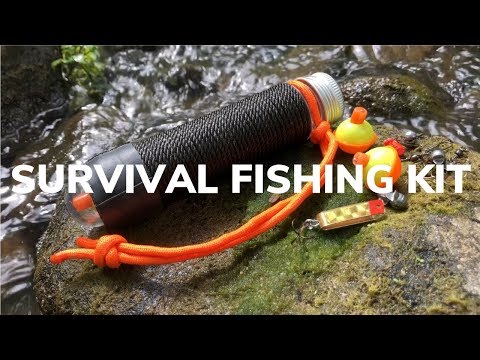
Fishing Kit
If you have bodies of water nearby that contain fish, it follows that fishing is an excellent way to supplement your sustenance when bushcrafting.
You don’t need much to successfully fish, and you might be surprised to learn that even a rudimentary fishing kit consisting of hooks, lures, bobbers, and lines can be mated to a collapsible fishing pole or even just a common branch and used with great success.
Depending on where you are going and how long you’re planning on staying out, this could even be a primary form of gathering food for yourself and your group. But even if it isn’t compact fishing kit is a great inclusion just in case.
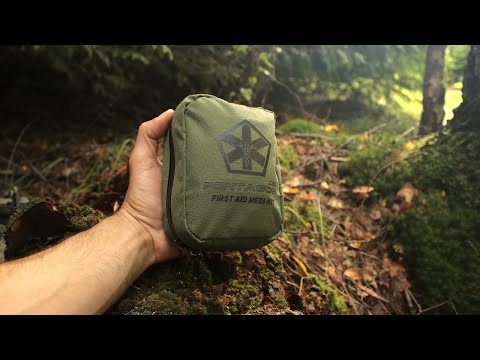
First-Aid Kit
Injuries of all kinds will accompany your work and forays out in the wilderness. Since no paramedics will be coming and you can’t exactly dash to the local clinic or the ER of a nearby hospital you’ll need to be prepared for all eventualities.
A well-stocked first aid kit is an absolute must, and it should have supplies for treating minor injuries as well as more serious trauma, along with a battery of medications for everything from pain relief to alleviating nausea and diarrhea.
Also, don’t forget to include quality-of-life items that can help keep you going when otherwise minor showstoppers might take their toll, things as sunburn creams, bug bite and sting stoppers, moleskin, and more.
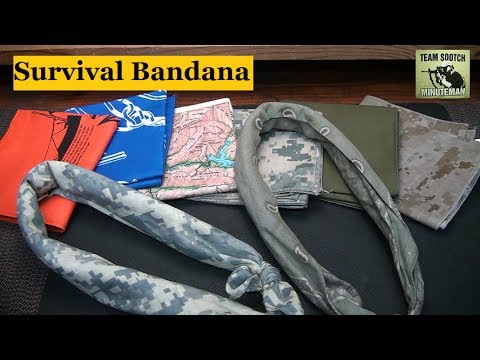
Bandana
A bandana is more than just a biker fashion accessory. It is an outdoor multi-tool! In a pinch, your bandana can serve as a sweatband, a face mask, an eye patch, a bindle, a rudimentary water filter and so much more.
It can also keep the sun off of you or be used as a pot holder for handling hot cookware coming off the fire.
So simple, but there is so much you can do with them. Make sure you have a handful of bandanas distributed throughout your bushcraft kit, and always, always keep one in your pocket!
Weapons
Bow
The bow is one of mankind’s oldest projectile weapons that is still optimized and updated even today.
Bows have the advantage of firing reusable projectiles, being quiet and decidedly deadly, but in the bargain you’ll have to bring plenty of skill and practice to the table if you want to defend yourself with one or put food on the table.
You can head out into the wild with a high-performance, modern bow or fashion one yourself from an appropriate wooden stave and sturdy cordage to serve as the bowstring.
Even relatively crude bows can be surprisingly effective. Take the time now to learn how to shoot them well and how to create your own and you’ll rarely be without some ranged attack capability.
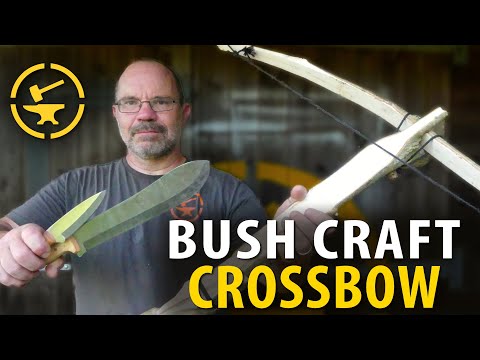
Crossbow
The crossbow is something of a lateral development of a conventional bow if not a definitive upgrade.
Combining the ergonomic advantages of a firearm with the reusable ammo, quiet operation, and simple principles of a bow, crossbows are deadly, accurate, and far easier to become skilled with compared to a traditional bow.
Though it is possible for you to craft a crossbow the intricacy of the cocking and triggering mechanism means it is less efficient and a dice or proposition compared to a traditional bow, so if you want to rely on a crossbow for your bushcrafting forays, bring one with you.
The good news is you can easily create good ammunition for even a modern crossbow once you know what you are doing, so that offsets this disadvantage somewhat.

Spear
An oldie but a goodie, a spear is quite literally just a blade on a stick. It is dead simple, but it has so many advantages everybody is well advised to learn how to use one.
Modern spears for hunting or battle-ready historical recreations are viable options for personal weaponry.
You can create a spear easily using any sturdy length of branch combined with sharp, knapped rock or any metal you can find for the purpose.
In a pinch, you can use a knife to create a spear by lashing or duct-taping it to a haft. This is naturally hard on your knife, but when you need the standoff capability and reach that only a spear can provide, be it for self-defense or for hunting, this isn’t a bad idea.

Slingshot
A slingshot is no mere kid’s toy. Capable of producing frightening accuracy and power using a variety of projectiles, all you need is a sturdy, y-shaped branch, powerful elastic material, and a flap of fabric or leather to create the pouch for the projectile and you are off to the races.
Alternately, you can bring a high-performance modern slingshot with you easily since they are so compact and lightweight.
Using found ammunition like pebbles or more modern choices like glass marbles or the ever deadly steel ball bearings, you’ll be ready to pick off smaller game at surprising distances or give a human attacker something serious to think about.

Sling
The precursor to the slingshot, the sling is a weapon going all the way back to biblical antiquity.
Relying on centrifugal force to generate considerable velocity with a small stone as ammunition, a sling is an incredibly simple weapon but an effective one so long as you have invested the long practice needed to become accurate with it on demand.
Probably the best attribute of the sling is that it is utterly lightweight and compact, capable of literally being coiled up and tucked into a pocket when it is not being used.
Probably not the best weapon to lead with, but assuming you have the ability it is a great backup or last-ditch weapon.
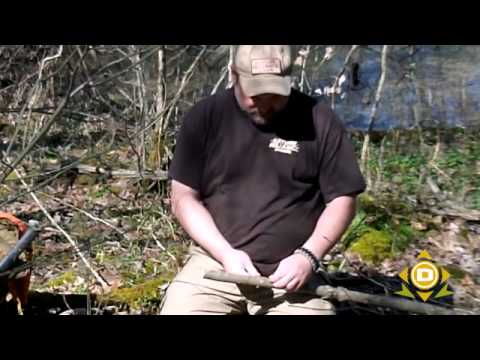
Gig
A gig is a small spear or trident consisting of multiple, thin, sharp points crowning a relatively short half and used for hunting small, nimble game on land or fish.
The advantage of a gig is it affords you a better margin for error when striking and is also far more likely to grip and hold prey when struck compared to a single-bladed spear or spike alone.
Gigs can easily be made from almost anything, including wood alone. You can also fashion them from a bundle of sturdy needles, wire, and other materials or carry an actual gig head that you can affix to half so you can craft yourself in the field.
Although not much force against any larger animals or human critters, it is nonetheless an invaluable addition to your hunting toolbox.
Club
Sometimes all that is needed to bring down dinner or convince a human assailant to apply their trade elsewhere is to hit it and hit it hard with no fanfare. We’re talking about going full caveman with a club.
Almost anything sturdy can be used as a club in a pinch, but you shouldn’t underestimate the viability of a more specialized tool for hunting or self-defense.
Throwing clubs in particular have been used by cultures around the world for millennia to excellent effect, and much of the time they are more effective and easier to use at a closer range than the more sophisticated weapons.
Conclusion
Bushcrafting is more than just survival. It is about living and thriving in an environment that is otherwise trying to kill you far removed from our modern civilization.
Bushcrafting is about making these wild places your home, and in order to do that, you’ll need plenty of skill and also the right tools to give yourself the best chance of success.
Look over the giant list of tools and weapons provided above to outfit your own bushcraft kit.

via Modern Survival Online https://ift.tt/orV4FGg

